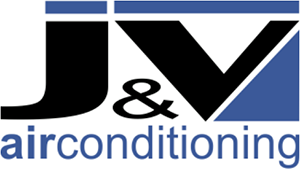FAQs
J & V Air Conditioning LLC
Have an HVAC question? J & V Air Conditioning LLC has the answer. Check out these FAQs and give us a call today for more information!
-
What causes the dust in our house?
Dust is a mix of small particles from various sources inside and outside your home. Here are the main reasons for dust:
- Shedding: Our skin cells, hair, and clothing fibers constantly flake off, adding to the dust. Pets contribute fur and dander.
- Outdoor invaders: Soil, pollen, and dust particles from outside gets in through open windows, doors, and shoes. Living on a dirt road or near construction can worsen this.
- Fabric traps: Rugs, carpets, furniture upholstery, and curtains trap dust particles.
- Airborne circulation: Dust mites thrive in warm, humid environments. Their droppings and dead bodies become part of the dust.
- Other factors: Poor ventilation, infrequent cleaning, leaky doors, and leaky windows lead to dust buildup.
-
What creates humidity in the house?
High humidity can make your home feel stuffy, uncomfortable, and lead to mold growth. Here are some reasons why your house might be humid:
- Weather: If you live in a humid and warm climate, there's more moisture in the air that can get into your house.
- Daily activities: Showering, cooking, and doing the laundry bring moisture into the air. Keep the bathroom door closed and use exhaust fans in the kitchen and bathroom.
- Venting issues: If your dryer vents into the house, it can add significant moisture. Also, a broken AC unit might not remove moisture from the air.
- Leaks: Leaky pipes, basements, or crawlspaces can bring moisture into your home.
- Structural problems: Poorly sealed doors, windows, or foundations can let humid outdoor air get inside your house.
-
What causes cold spots in the house?
Feeling surprising chills in certain areas of your home can be frustrating. Here are common factors that can contribute to cold spots:
Airflow Problems:
- Blocked vents: Furniture, toys, or rugs, can block vents, preventing warm air from circulating.
- Leaky ducts: Duct holes or tears can allow heated air to escape before reaching its destination.
- Duct sizing issues: Ducts that are too small or too large for your house can lead to uneven airflow.
- Return vents: Make sure return vents aren't blocked, as they allow air to circulate back to the heating system.
- Insulation issues: Poor insulation in attics, crawlspaces. and walls, allowing heat to get inside and making those areas feel colder.
- Door and window leaks: Drafty doors and windows let cold air get in, creating cold spots near them.
- Thermostat malfunction: A faulty thermostat might not accurately display the temperature, leading to uneven heating.
- Improperly sized furnace: If your furnace is too small for your house, it can't keep up with heating demands, especially in larger spaces.
-
Why is my thermostat not displaying the correct temperature?
There are 2 reasons why your thermostat might not reach the correct temperature - issues with the thermostat itself, or problems with your HVAC system.
Thermostat Issues:
- Needs calibration: Over the years, thermostats become less accurate. Consult your thermostat's manual for calibration instructions.
- Dirty or dusty: Dust buildup on the sensor can cause it to display the wrong room temperature. Gently clean the thermostat with a soft cloth.
- Low batteries: If your thermostat uses batteries, check if they're weak and replace them with new ones.
- Incorrect settings: Double-check that the thermostat is set to the correct mode (heat or cool) and the desired temperature.
- Placement: Keep your thermostat away from lamps, vents, or drafty areas.
- Malfunctioning thermostat: If none of the above solutions work, your thermostat might be faulty and need to be replaced.
HVAC System Issues:
- Dirty air filters: A clogged air filter hurts airflow, making it harder for your HVAC system to reach the desired temperature. Replace your air filter regularly.
- Blocked vents or ducts: Furniture, rugs, or closed vents can affect air circulation. Ensure vents are open and unobstructed. For issues with ducts, consult us.
- Undersized HVAC system: If your system is too small for your house, it might not be able to maintain the right temperature.
- HVAC malfunction: There could be problems with the air conditioner, furnace, or parts. If you think you have an HVAC issue, call us for service.
-
How often should I change my filters?
The recommended frequency for changing air filters depends on a few factors:
Filter Type:
There are 2 main types of air filters:
- Fiberglass filters: They are the most affordable option, but they also collect less dust and allergens. They should be changed every 30 days, or more often in heavily polluted environments.
- Pleated filters: They are more expensive upfront, but last longer and capture more dust particles. They can generally last up to 90 days, depending on usage.
Home Environment:
- Pets: If you have pets, they shed fur and dander, which can clog air filters more quickly. In homes with pets, consider changing filters every 45-60 days.
- Air quality: If you live in an area with high pollution levels, dusty environments, or pollen, you'll need to change your filters more often, likely every 45-60 days.
- Seasonality: During seasons with heavy pollen or allergens, you might need to change your filters more frequently, perhaps every 6-8 weeks.
serving Area
Houston, TX
and surrounding areas
License - TACLB019197E
Business Hours
- Mon - Fri
- -
- Saturday
- -
- Sunday
- Closed
After-Hours Emergency Service






Share On: